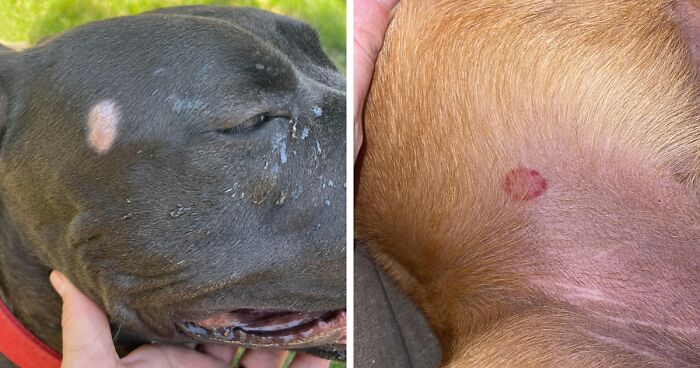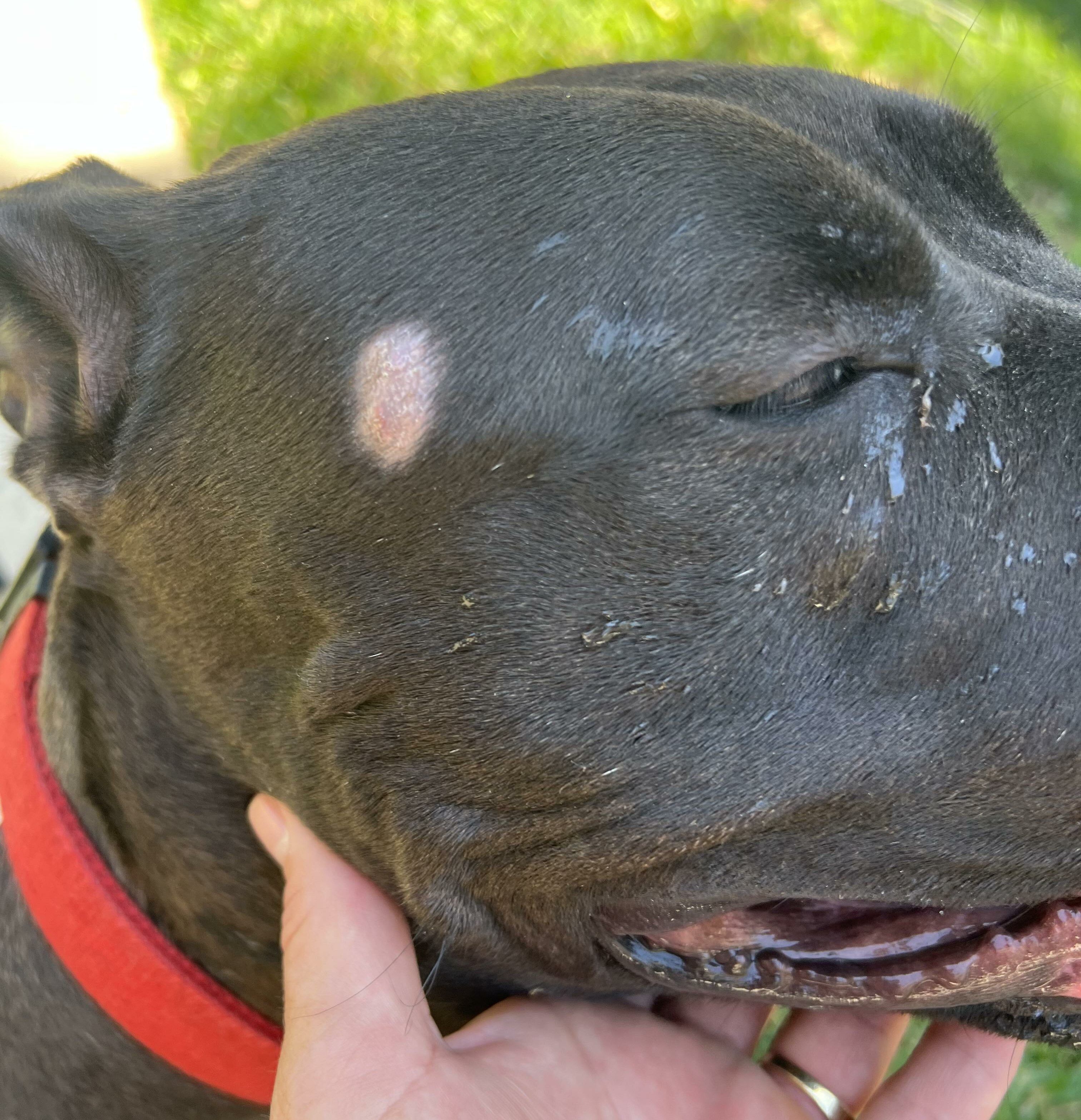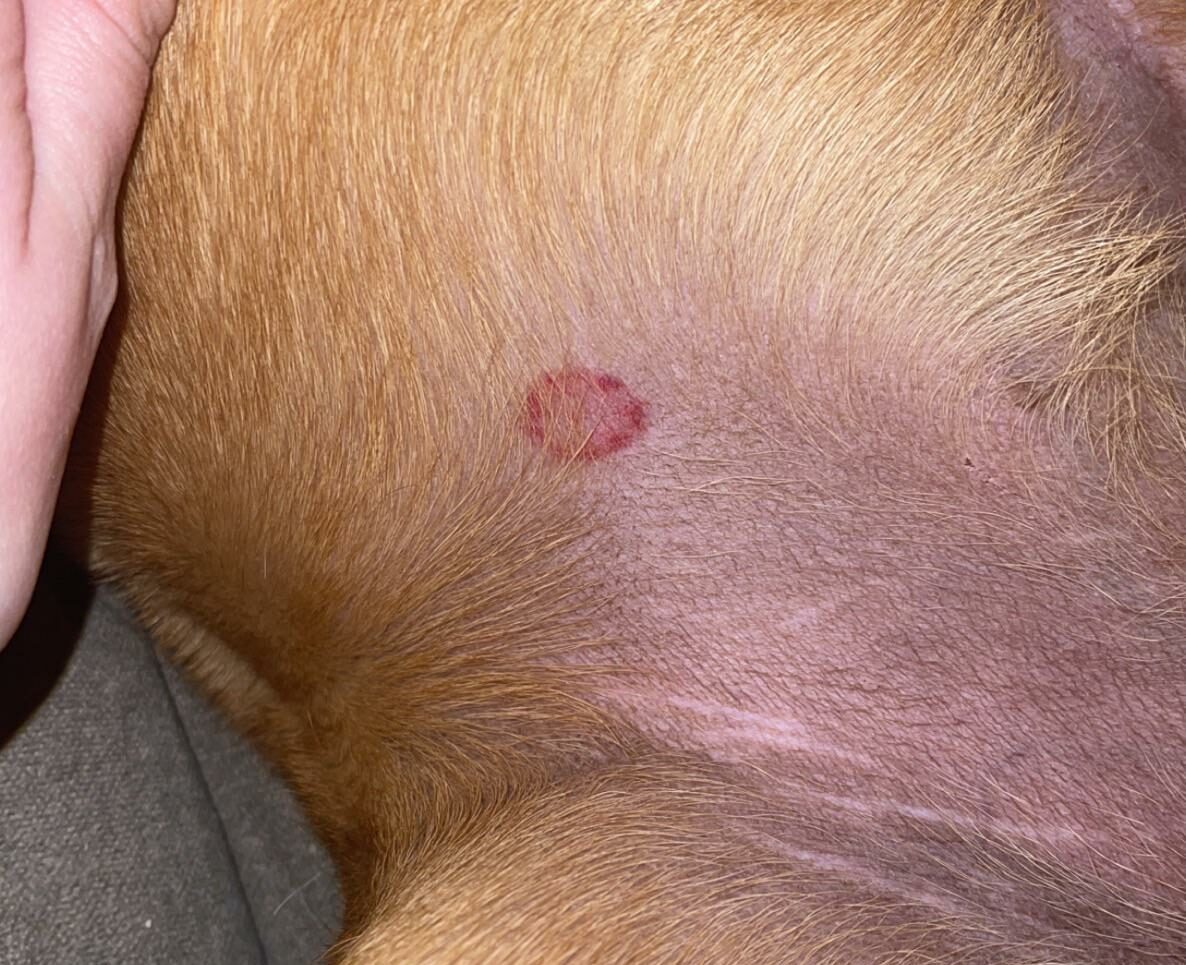Disclaimer: Please refer to the information in this article as a guide only. If you are worried about your pet’s health or behavior, it’s best to contact your veterinarian.
Have you ever noticed your furry friend itching more than usual or perhaps found a mysterious patch of missing fur? Ringworm – a common yet often misunderstood condition in dogs, can be a cause of concern for many pet owners. But how do we effectively tackle this issue and keep our dogs happy and healthy?
- Ringworm is a fungal infection, not caused by a worm.
- Treat dogs using topical therapies & oral medications.
- Ringworm can be contagious to humans and other pets.
- Without treatment, ringworm can lead to serious issues.
A combination of topical therapies and oral medications is essential to treat ringworm in dogs. Effective treatment includes medicated products like miconazole, terbinafine, or clotrimazole, regular bathing with specific shampoos, and sometimes oral antifungals like griseofulvin or itraconazole.
But there’s more to ringworm treatment than just medication.
Let’s explore the nuances of dog ringworm and how you can ensure your dog’s speedy recovery and prevent future outbreaks.
The information provided herein is for informational purposes only. Please refer to our disclaimer for more details..
What Is a Ringworm?
Image credits: ersatz07
Ringworm, medically termed dermatophytosis, is a fungal infection that affects dogs’ skin, hair, and sometimes nails. Contrary to its name, it’s not caused by a worm. This fungus thrives in the skin’s outer layers and hair follicles, leading to circular patches of fur loss due to the fragility it causes in the fur. The infection’s classic sign is a red, raised, ring-like lesion, although it’s not always ring-shaped.
In dogs, most cases of ringworm are predominantly caused by three fungi:
- Microsporum canis (70% of ringworm cases)
- Microsporum gypseum (20%)
- Trichophyton mentagrophytes (10%)
While typically not a grave health concern, ringworm can pose a greater risk to certain dogs, like puppies, seniors, immunocompromised individuals, and Yorkshire Terriers. Although the ringworm infection generally affects limited body areas, more extensive infections can occur, especially in vulnerable dogs.
How Do Dogs Get Ringworms?
A dog’s ringworm is a contagious fungal infection transmitted through several ways:
- Direct Contact: Dogs can get ringworm by touching an infected animal or person.
- Contaminated Objects/Surfaces: Everyday items like couches, brushes, food bowls, bedding & carpets can harbor the fungus. And ringworm spores on these objects can remain infectious for up to 18 months.
- Soil or Dirt: Particularly in warm, humid conditions, dogs digging or rolling in the dirt can contract the fungus.
- Vulnerability Factors: Dogs with weakened immune systems, existing skin conditions, open sores, or broken skin are more susceptible to infection.
The risk of infection depends on the level of environmental contamination and the age of the dog. Kennels or shelters housing multiple animals in close quarters often see higher rates of ringworm transmission.
Symptoms of Ringworms in Dogs
Image credits: skfbgmfl
If a dog has ringworms, symptoms may not be noticeable until up to three weeks after infection. While not life-threatening to dogs, ringworm is contagious and necessitates veterinary attention. Symptoms can take up to three weeks to appear post-infection. Key signs indicating that a dog may have ringworm include:
- Hair Loss: Circular areas of hair loss (alopecia), often ring-shaped, can occur anywhere on the body. As these lesions grow, they may start healing in the center, leading to a patchy appearance.
- Skin Changes: Affected areas may exhibit dry, brittle hair, raised, crusty bumps around hair follicles, and, in some cases, inflammation or scabby covering. The skin might also appear grey and scaly or have red, skinless patches that may ooze.
- Claw Issues: Ringworms can infect claws, causing them to become rough, brittle, and prone to breaking. Sometimes – nails may grow deformed.
- Behavioral Changes: While ringworms typically don’t itch, some dogs might scratch or lick affected areas.
It’s important to differentiate these symptoms from other conditions like Cushing’s disease, hypothyroidism, nutrient imbalances, or other skin issues. Some dogs can carry ringworm fungi without showing symptoms yet still spread ringworm infection.
Methods To Diagnose Ringworms in Dogs
Diagnosing ringworms in dogs involves several methods due to the condition’s resemblance to other skin issues. Besides observing physical symptoms, your vet may recommend the following tests to differentiate ringworm from other skin conditions like bacterial infections, mite infestations, or allergic reactions:
- Wood’s Lamp Examination: This test involves using a special ultraviolet lamp to inspect the dog’s skin and coat in a dark room. Ringworms may glow with a yellow-green fluorescence – but this is not always reliable as not all dermatophytes fluoresce, and some dogs could be asymptomatic.
- Fungal Culture: The most accurate method for diagnosing ringworm. Samples of hair, skin scrapings, nails, or scabs are cultivated in a lab. A positive culture might be evident in a few days, but sometimes, it can take up to three weeks. This method is necessary because other conditions can cause similar symptoms.
- PCR Test: This test detects fungal DNA in the dog’s hair and can provide results within 3-5 days. However, it cannot distinguish between living or dead fungi, making it unsuitable for follow-up tests post-treatment.
- Microscopic Examination: Vets may examine plucked hairs or skin scrapings under a microscope. In some cases, samples are brushed from lesions and grown in special mediums, either in-clinic or sent to external labs.
- Skin Biopsy: If initial tests are inconclusive or treatments have failed, a skin biopsy may be recommended. This is typically done under anesthesia or sedation.
Early and accurate diagnosis is crucial for effective treatment and preventing the spread to other animals or humans.
How Do Vets Treat Ringworms In Dogs?
When addressing ringworms in dogs, veterinarians consider several factors: the severity of the infection, the number of pets in the household, and the presence of vulnerable individuals like children or immunocompromised adults. Based on these factors, your vet will devise a tailored treatment plan encompassing topical and oral therapies and environmental decontamination.
1. Topical Therapy
A cornerstone of ringworm treatment is topical therapy. These therapies are crucial in minimizing the spread of the infection within the environment, this usually involves:
- Medicated Products: Vets often prescribe creams, ointments, or medicated shampoos containing active ingredients like miconazole (Micaved®), terbinafine (Lamisil®), or clotrimazole (Otomax® or Otibiotic®). These products help control the infection and prevent its spread.
- Regular Bathing: Your vet will also recommend regular use of chlorhexidine and miconazole-based shampoos or lime-sulfur dips, along with ointments for better results, typically twice a week.
- Hair Trimming: For long-haired breeds, vets may advise clipping the fur to enhance the effectiveness of topical treatments. Shaving hair from infected areas can speed up recovery and minimize shedding & environmental contamination.
- Frequency of Application: These treatments are generally applied for several weeks to several months, depending on the severity of the infection.
2. Oral Medications
Oral antifungal medications are often used in conjunction with topical treatments. Key points include:
- Common Medications: Griseofulvin (Fulvicin®, Gris-Peg®, Grisovin®) is widely used, though newer drugs like itraconazole (Itrafungol®, Sporanox®, Onmel®) or terbinafine are becoming more popular due to fewer side effects.
- Antibiotics: In instances where bacterial skin infections accompany ringworm, or if there’s suspicion of such – veterinarians may also prescribe antibiotics. And, this dual approach ensures that both fungal and bacterial elements of the skin condition are addressed.
- Duration: Treatment typically lasts a minimum of six weeks but can extend for several months, depending on the response.
3. Environmental Decontamination To Stop Ringworms from Spreading
A critical aspect of ringworm treatment is environmental cleaning, as the spores can survive on various surfaces and are a source of reinfection or infection to other animals and humans. Therefore – cleaning and disinfecting the living spaces of the dog is imperative. Here are key steps to effectively decontaminate your home and the items your dog uses:
- Initial Deep Clean: Thoroughly clean all areas where your dog spends time, including your home and vehicle. Use detergent to wipe down hard surfaces. Fungal spores can also be killed with a solution of chlorine bleach and water (1 pint of bleach per gallon of water) in areas where it’s safe to use.
- Sanitizing Items: Wash your dog’s bowls and toys in hot, soapy water. And, vacuum bedding and soft furnishings with a filtered vacuum cleaner, then machine wash these items twice with regular laundry detergent on a long cycle.
- Regular Cleaning Routine: Conduct deep cleaning twice a week and daily vacuuming, washing, and wiping down surfaces to remove any newly infected hairs.
- Minimizing Spread: While under treatment, limit dogs infected with ringworm to one room to reduce environmental contamination and prevent the spread of ringworm. Use disposable gloves and practice hand hygiene after interacting with your dog. Ensure that your dog’s toys, leads, collars, feeding equipment & bedding are washable and not shared with other pets. Remember to wash your clothes after contact with your dog.
4. Additional Considerations To Prevent Ringworms in Dogs
Other factors to keep in mind include:
- Continued Treatment: It’s important to continue treatment for the prescribed duration – even if symptoms appear to resolve. Because premature cessation can lead to recurrence.
- Treating Other Pets: In multi-pet households, your vet may recommend testing and treating other animals, as they may have ringworms even if they are not showing symptoms.
- Post-Treatment Testing: After completing treatment, vets typically conduct two fungal cultures, one week apart, to ensure the infection is fully cleared.
Will Dog Ringworms Go Away by Themselves?
Treating ringworm in dogs promptly is crucial. While it may self-resolve in about 9-12 months – untreated ringworm can lead to extensive hair loss, wounds & secondary infections. Dogs with weakened immune systems are particularly susceptible and may experience prolonged recovery times.
However, timely treatment usually results in recovery within a few weeks to months. As ringworm is highly contagious, without intervention, the fungus can spread throughout your home, posing a risk to other pets (dog or cat) and family members.
How Easily Can Humans Catch Ringworms From Dogs?
Ringworm, known to humans as athlete’s foot or jock itch, is a zoonotic infection – meaning it can easily spread from dogs to humans. This fungal infection is a big concern because anyone who’s close to an infected dog can catch it. And it’s especially risky for young kids, older people, and those with weak immune systems. In people, ringworm usually shows up as a round, red, itchy rash.
If you or someone in your home gets this rash after being around a dog with ringworm, it’s important to see a doctor. Getting medical help quickly is key because ringworm usually gets better with treatment in humans. This highlights why it’s so important to treat ringworm right away to stop it from spreading to people in the house.
Conclusion
Tackling ringworms in our beloved dogs is not just about their health; it’s a commitment to the well-being of our entire household. As responsible dog owners – it’s critical to understand and take care of this common but manageable problem. Remember, finding it early and treating it consistently is important for helping our dogs get better quickly and stay happy. And by doing what’s needed, you’re not just fighting a fungal infection. You’re also making a safe and healthy place for both your dog and your family. Let’s take on this responsibility with the love & care our dogs deserve. Working together, we can control ringworm and help our dogs have happy, healthy lives.
Poll Question
Thanks! Check out the results:
13Kviews
Share on Facebook
 Dark Mode
Dark Mode 

 No fees, cancel anytime
No fees, cancel anytime 




















































4
0